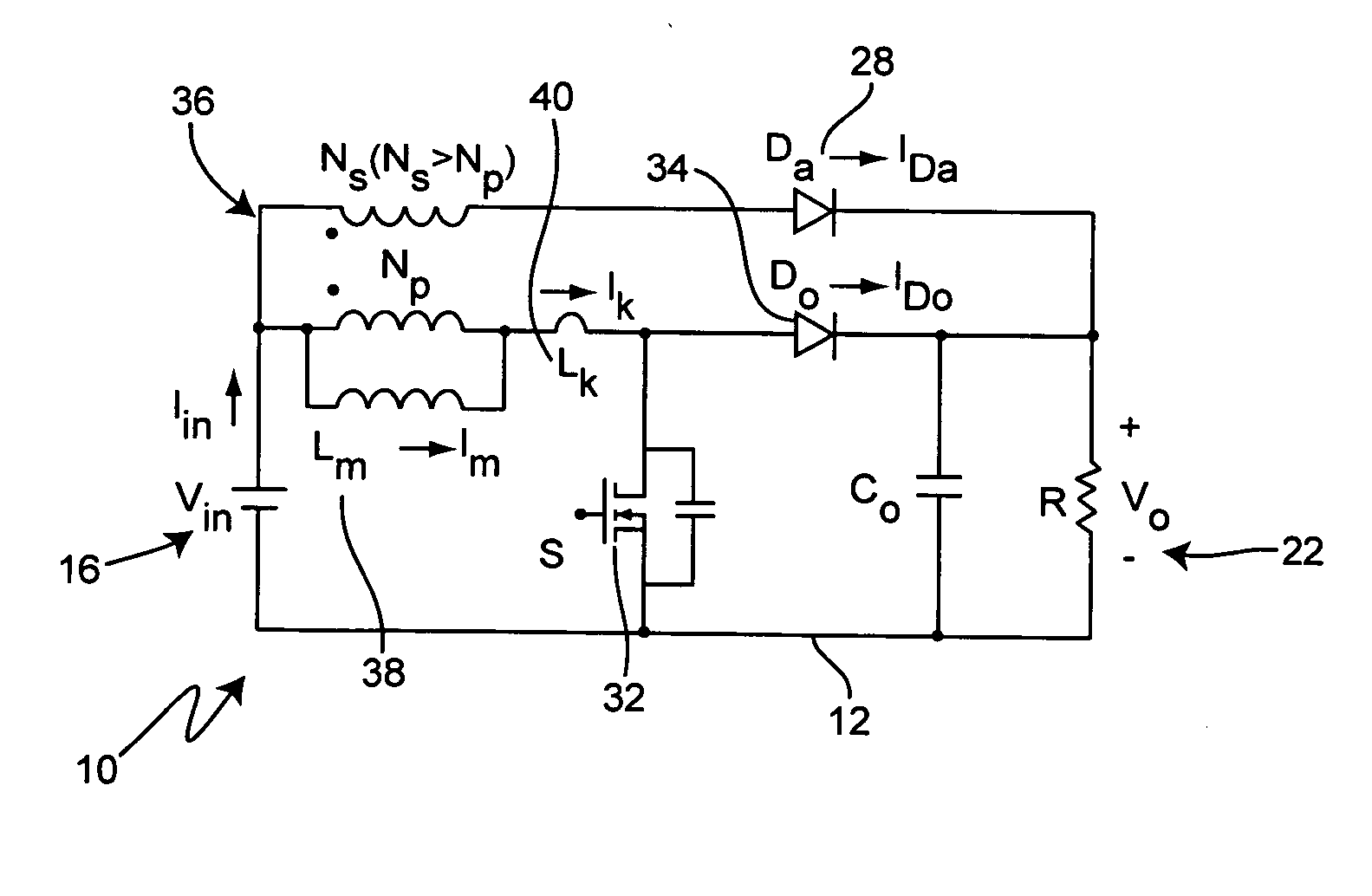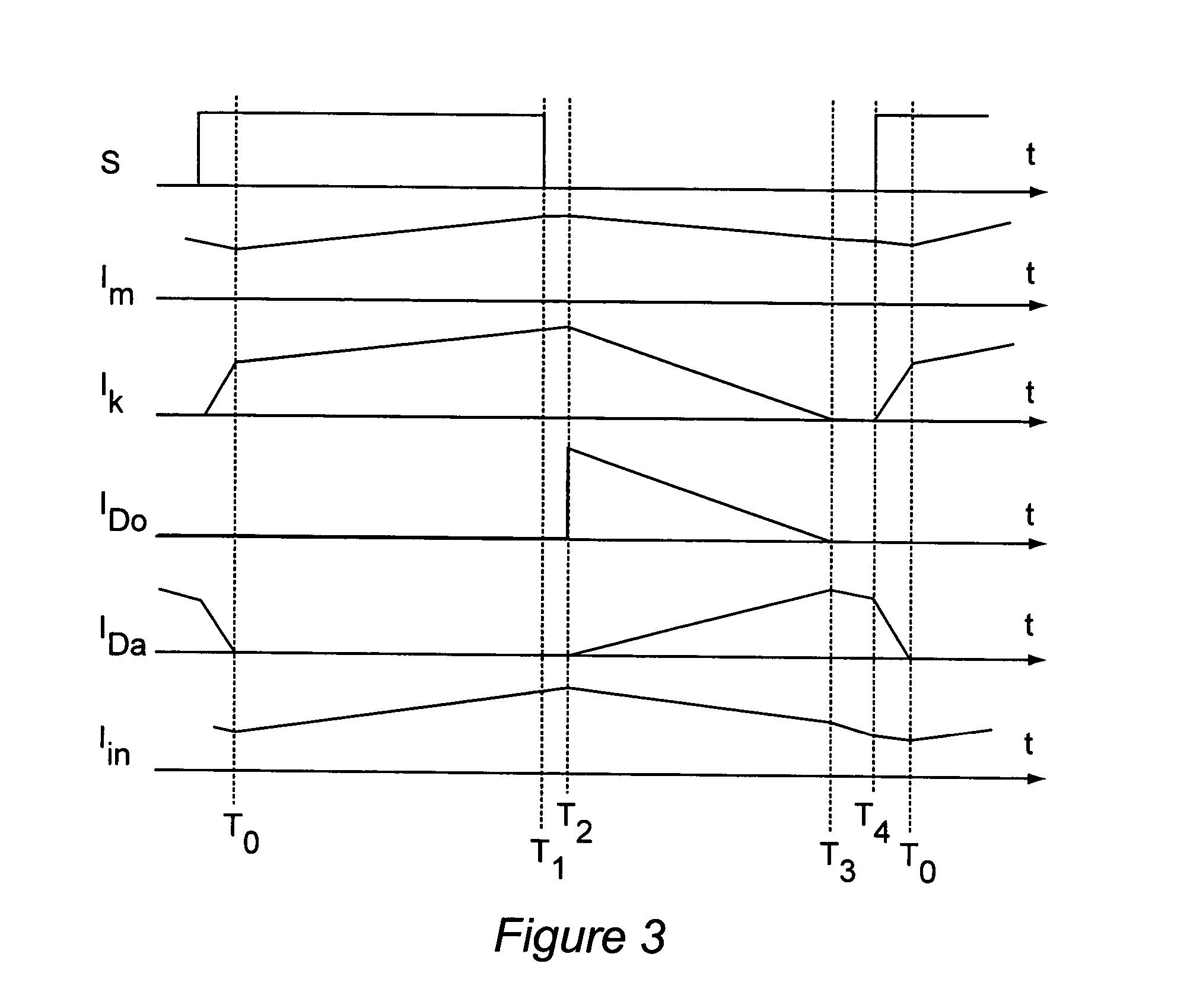Coupled inductor DC/DC converter
a converter and coupled inductor technology, applied in the direction of dc-dc conversion, power conversion systems, instruments, etc., can solve the problems of severe rectifier reverse recovery problems of ccm boost converters, huge turn-on current spikes of active switches of converters, and high switching turn-on loss, etc., to improve efficiency, cost-effective
- Summary
- Abstract
- Description
- Claims
- Application Information
AI Technical Summary
Benefits of technology
Problems solved by technology
Method used
Image
Examples
Embodiment Construction
[0053] In a most basic embodiment, the present invention is a DC / DC converter for managing high voltage gain that includes an input side having a high tap and a low tap, an output side having a high tap and a low tap, a converter circuit interconnecting the input side and the output side, and a steering branch having at least one rectifier and one of at least one winding and a capacitor. The steering branch interconnects the input side with the output side. The converter circuit is preferably selected from the following types of conventional converter circuits: buck, boost, buck-boost, Cuk, Sepic, Zeta, half bridge boost for low-line input, half bridge boost for high-line input, and half bridge boost for universal-line input.
[0054] Referring now to the drawings, and more particularly to FIG. 1, there is shown a circuit diagram of a DC / DC converter, shown generally at 10, employing a boost converter circuit 12 with a steering branch, shown generally at 14, in accordance with the pre...
PUM
 Login to View More
Login to View More Abstract
Description
Claims
Application Information
 Login to View More
Login to View More - R&D
- Intellectual Property
- Life Sciences
- Materials
- Tech Scout
- Unparalleled Data Quality
- Higher Quality Content
- 60% Fewer Hallucinations
Browse by: Latest US Patents, China's latest patents, Technical Efficacy Thesaurus, Application Domain, Technology Topic, Popular Technical Reports.
© 2025 PatSnap. All rights reserved.Legal|Privacy policy|Modern Slavery Act Transparency Statement|Sitemap|About US| Contact US: help@patsnap.com



